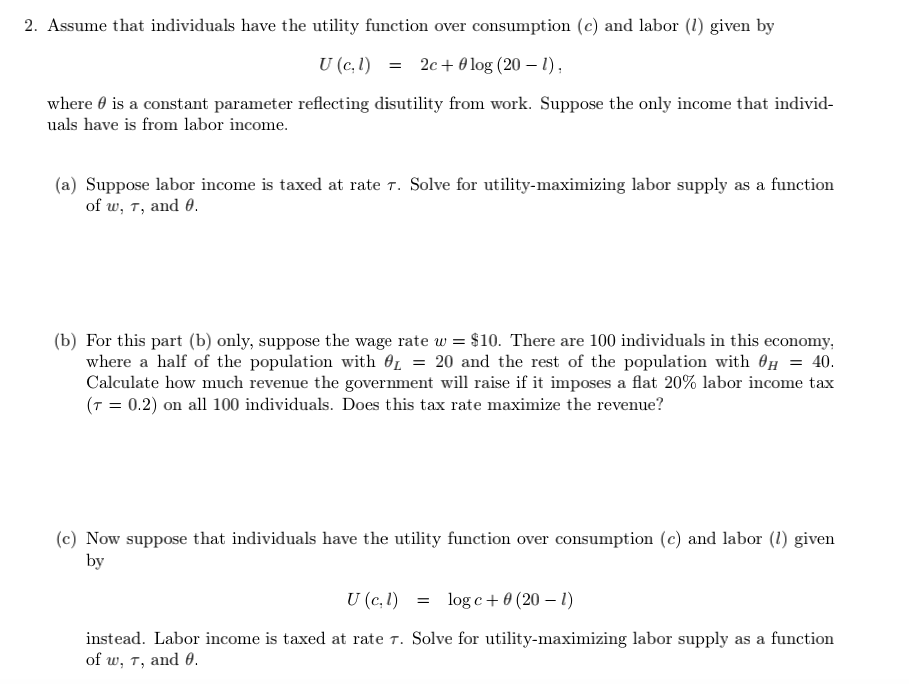2. Assume that individuals have the utility function over consumption (c) and labor (1) given by U (c,1) = 2c+0 log (20 – 1), where 0 is a constant parameter reflecting disutility from work. Suppose the only income that individ- uals have is from labor income. (a) Suppose labor income is taxed at rate T. Solve for utility-maximizing labor supply as a function of w, T, and 0.
2. Assume that individuals have the utility function over consumption (c) and labor (1) given by U (c,1) = 2c+0 log (20 – 1), where 0 is a constant parameter reflecting disutility from work. Suppose the only income that individ- uals have is from labor income. (a) Suppose labor income is taxed at rate T. Solve for utility-maximizing labor supply as a function of w, T, and 0.
Chapter10: Cost Functions
Section: Chapter Questions
Problem 10.10P
Related questions
Question
A3

Transcribed Image Text:2. Assume that individuals have the utility function over consumption (c) and labor (1) given by
U (c,1) = 2c+0 log (20 – 1),
where 0 is a constant parameter reflecting disutility from work. Suppose the only income that individ-
uals have is from labor income.
(a) Suppose labor income is taxed at rate T. Solve for utility-maximizing labor supply as a function
of w, T, and 0.
(b) For this part (b) only, suppose the wage rate w = $10. There are 100 individuals in this economy,
where a half of the population with OL = 20 and the rest of the population with On = 40.
Calculate how much revenue the government will raise if it imposes a flat 20% labor income tax
(T = 0.2) on all 100 individuals. Does this tax rate maximize the revenue?
(c) Now suppose that individuals have the utility function over consumption (c) and labor (1) given
by
U (c, 1)
= log c+ 0 (20 – 1)
instead. Labor income is taxed at rate T. Solve for utility-maximizing labor supply as a function
of w, T, and 0.
Expert Solution
This question has been solved!
Explore an expertly crafted, step-by-step solution for a thorough understanding of key concepts.
Step by step
Solved in 3 steps

Knowledge Booster
Learn more about
Need a deep-dive on the concept behind this application? Look no further. Learn more about this topic, economics and related others by exploring similar questions and additional content below.Recommended textbooks for you

